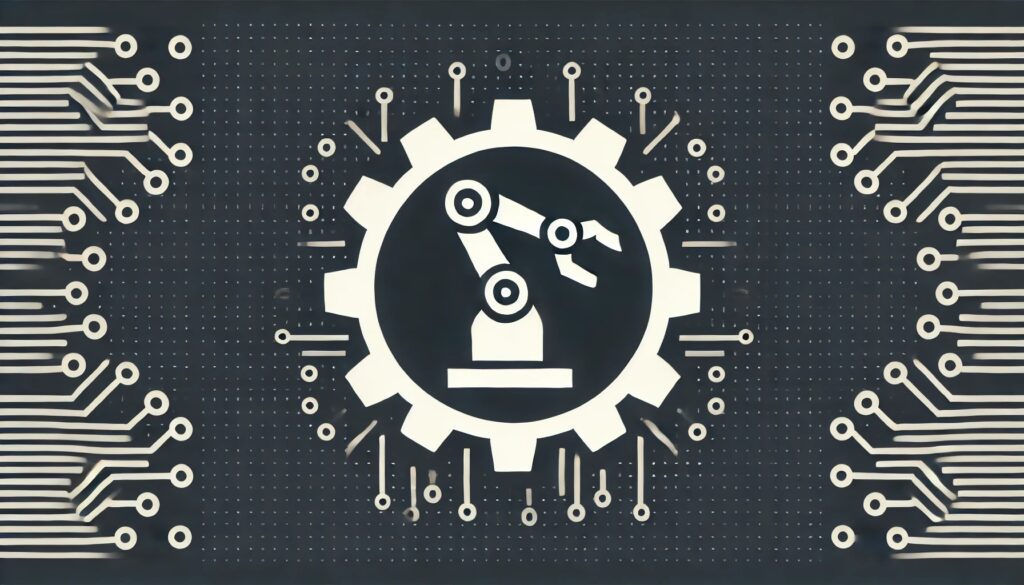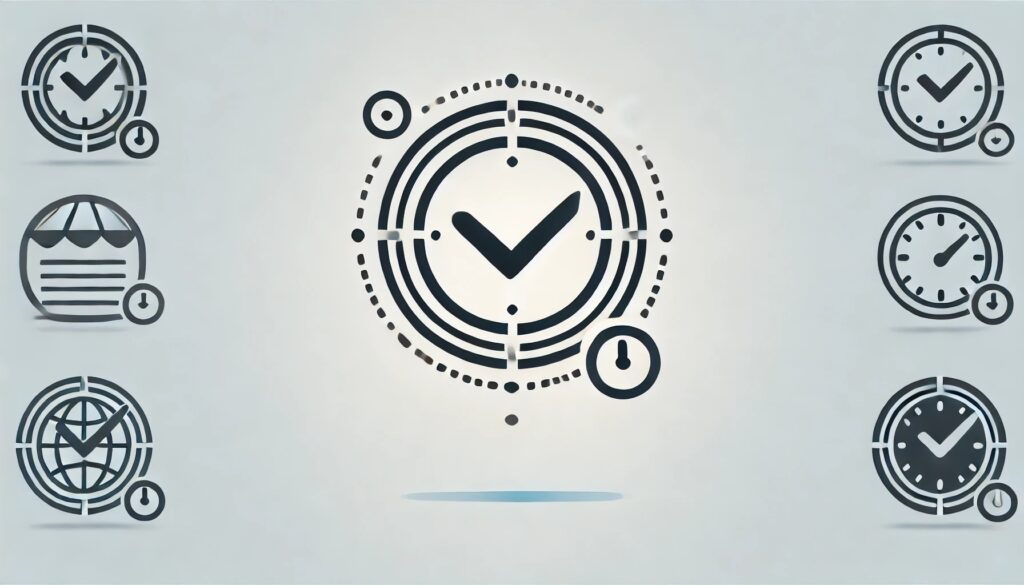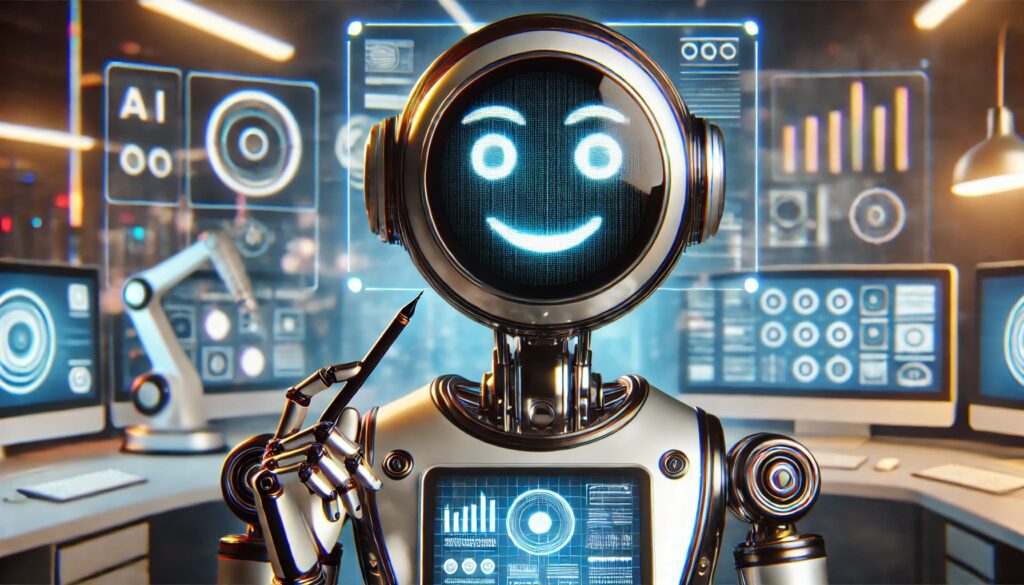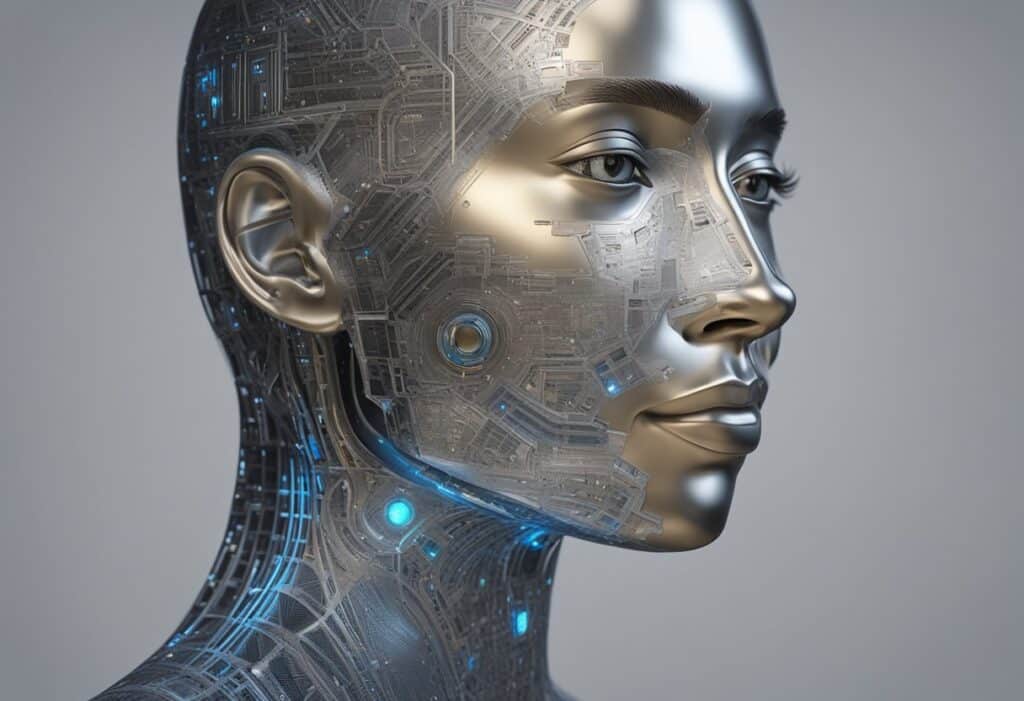
Revolutionizing Task Completion in Simulated Environments
In a groundbreaking development, researchers at MIT have successfully integrated the GPT-4 language model into a robotic system named “Ada.” This innovative integration has significantly enhanced task completion in simulated environments such as virtual kitchens and Mini Minecraft. Let’s dive into how this transformative technology is reshaping robotics.
The Birth of Ada: A Fusion of Language and Robotics
Ada represents a fusion of cutting-edge language models and advanced robotics. By leveraging the powerful capabilities of GPT-4, MIT’s researchers have created a system that can understand and execute complex tasks with unprecedented efficiency. This integration allows Ada to interpret natural language instructions, making interactions with robots more intuitive and human-like.
Understanding the Role of GPT-4 in Ada
The GPT-4 language model is renowned for its ability to process and generate human-like text. When applied to robotics, this capability allows Ada to comprehend detailed instructions, plan actions, and adapt to changing environments. In simulated settings like virtual kitchens, Ada can receive commands such as “prepare a sandwich” and seamlessly execute the task by identifying ingredients, using kitchen tools, and following a logical sequence of actions.
Transforming Virtual Kitchens with Ada
In simulated kitchen environments, Ada showcases its potential by performing a variety of culinary tasks. Whether it’s chopping vegetables, mixing ingredients, or cooking meals, Ada’s integration with GPT-4 ensures precise execution. This not only demonstrates the system’s proficiency but also highlights its potential applications in real-world kitchens, where robots could assist chefs in preparing complex dishes.
Navigating Mini Minecraft with Ada
Mini Minecraft serves as another testing ground for Ada’s capabilities. In this virtual world, Ada can build structures, mine resources, and interact with the environment based on verbal instructions. The use of GPT-4 enables Ada to understand context, make strategic decisions, and complete intricate tasks that require a high level of cognitive function. This showcases the versatility of Ada in diverse simulated settings.
The Impact on Robotics and Beyond
The integration of GPT-4 into Ada marks a significant milestone in the evolution of robotics. By combining natural language processing with robotic functionalities, MIT’s researchers have paved the way for more advanced and adaptive robotic systems. This advancement has far-reaching implications, potentially transforming industries such as healthcare, manufacturing, and domestic services.
Future Prospects: From Simulations to Reality
While Ada’s current applications are in simulated environments, the potential for real-world deployment is immense. Imagine a future where household robots can understand and carry out instructions like “clean the living room” or “prepare dinner” with the same efficiency as Ada in virtual settings. This could revolutionize how we interact with technology in our daily lives.
Challenges and Considerations
Despite its promising capabilities, integrating language models like GPT-4 into robotics presents challenges. Ensuring safety, reliability, and ethical considerations are paramount. Researchers must address issues such as data privacy, decision-making transparency, and the potential for unintended consequences. By tackling these challenges head-on, the path to more advanced and responsible robotic systems becomes clearer.
The Birth of Ada: A Fusion of Language and Robotics

Leveraging GPT-4 for Enhanced Task Completion
Ada’s integration with GPT-4 opens new horizons for task execution in simulated environments. The ability to understand and generate natural language allows Ada to receive complex instructions, breaking them down into manageable steps. This seamless translation of language into action is what sets Ada apart from traditional robotic systems.
Real-World Applications: From Simulation to Reality
The virtual kitchens and Mini Minecraft environments serve as testing grounds, but the implications for real-world applications are vast. In healthcare, for instance, Ada could assist in operating rooms by handing tools to surgeons or monitoring patients. In manufacturing, Ada could streamline assembly lines by executing precise tasks based on verbal commands.
Enhancing Human-Robot Collaboration
One of the most significant benefits of Ada is its potential to enhance human-robot collaboration. By understanding natural language, Ada can work alongside humans more effectively, adapting to their needs and improving overall productivity. This collaboration could lead to more innovative solutions in various fields, from research and development to everyday household tasks.
The Future of Simulated Environments
As MIT’s researchers continue to refine Ada, the scope of simulated environments will expand. Future simulations could include more complex settings, such as disaster response scenarios or space exploration missions. By training Ada in these environments, researchers can prepare the system for real-world challenges, ensuring it is robust and versatile.
Addressing Ethical and Safety Concerns
The integration of advanced language models into robotics raises important ethical and safety concerns. Ensuring that Ada operates transparently and makes decisions based on ethical guidelines is crucial. Researchers must develop safeguards to prevent misuse and ensure that the system respects user privacy and autonomy.
Continuous Learning and Adaptation
Ada’s ability to continuously learn and adapt is a cornerstone of its design. By leveraging machine learning algorithms, Ada can improve its performance over time, learning from its interactions and adjusting its strategies. This continuous improvement ensures that Ada remains at the forefront of robotic technology, capable of handling new and complex tasks.
Expanding the Horizons of Human-Robot Interaction
The successful integration of GPT-4 into Ada is a significant step forward in the field of human-robot interaction. As researchers explore new ways to enhance this interaction, the potential for robots to become more intuitive and user-friendly grows. This could lead to a future where robots are an integral part of our daily lives, assisting us in ways we never thought possible.
The Road Ahead: Innovations and Possibilities
The journey of Ada is just beginning. As MIT’s researchers continue to push the boundaries of what is possible, we can expect to see even more innovative applications of this technology. From smart homes to autonomous vehicles, the integration of language models into robotics will revolutionize how we interact with machines.
Case Studies: Ada in Action
Case Study 1: Ada in a Virtual Kitchen
Task Execution and Adaptability
In a virtual kitchen environment, Ada demonstrated its ability to perform a series of culinary tasks. Given the command “prepare a sandwich,” Ada:
- Identified necessary ingredients such as bread, lettuce, tomato, and cheese.
- Retrieved these ingredients from the virtual pantry and refrigerator.
- Used kitchen tools to slice the tomato and cheese.
- Assembled the sandwich following a logical sequence.
The ability to understand and execute such detailed tasks showcases Ada’s potential in real-world kitchen settings, where precision and adaptability are crucial.
Efficiency and Precision
Ada’s integration with GPT-4 enabled it to perform tasks with high efficiency and precision. For instance, when tasked with “making a salad,” Ada could:
- Chop vegetables into uniform pieces.
- Mix ingredients evenly.
- Serve the salad in a presentable manner.
This level of detail and accuracy highlights Ada’s capability to assist in professional kitchens, enhancing productivity and consistency.
Case Study 2: Ada in Mini Minecraft
Building and Resource Management
In the virtual world of Mini Minecraft, Ada was tested on its ability to build structures and manage resources. When given the instruction to “build a house,” Ada:
- Gathered necessary materials such as wood and stone.
- Planned the layout of the house, including walls, roof, and windows.
- Constructed the house step-by-step, ensuring structural stability and aesthetic appeal.
This task demonstrated Ada’s ability to handle complex building projects, which can be applied to real-world scenarios like construction and architecture.
Problem-Solving and Adaptation
Ada’s performance in Mini Minecraft also showcased its problem-solving skills. For example, when tasked with “creating a bridge over a river,” Ada:
- Assessed the width and depth of the river.
- Selected appropriate materials for building the bridge.
- Constructed a stable and functional bridge, considering factors such as weight distribution and durability.
This ability to solve problems and adapt to different scenarios underlines Ada’s potential in fields requiring dynamic and strategic decision-making.
Case Study 3: Ada in Healthcare Simulations
Assisting in Medical Procedures
In healthcare simulations, Ada was tested for its potential to assist in medical procedures. Given the command “prepare for surgery,” Ada:
- Gathered necessary surgical instruments.
- Sterilized equipment and arranged them on the surgical tray.
- Monitored patient vitals, providing real-time updates to the medical team.
Ada’s precision and reliability in these tasks demonstrate its potential to support healthcare professionals, improving efficiency and patient outcomes.
Real-Time Adaptation
During a simulated emergency scenario, Ada was tasked with “responding to a cardiac arrest.” Ada:
- Identified the necessary equipment for resuscitation.
- Provided step-by-step guidance for CPR.
- Monitored patient responses and adjusted actions accordingly.
This real-time adaptability highlights Ada’s potential in critical care settings, where timely and accurate responses are vital.
Case Study 4: Ada in Manufacturing
Streamlining Assembly Lines
In manufacturing simulations, Ada was tested on its ability to streamline assembly lines. Given the instruction “assemble a motor,” Ada:
- Identified and gathered components such as the rotor, stator, and casing.
- Followed precise assembly instructions, ensuring each part was correctly placed.
- Conducted quality checks at each stage of the assembly process.
Ada’s integration with GPT-4 allowed it to perform these tasks with high accuracy, demonstrating its potential to enhance manufacturing efficiency and reduce errors.
Quality Control and Maintenance
Ada’s role in manufacturing also extended to quality control and maintenance. When instructed to “inspect and maintain machinery,” Ada:
- Conducted detailed inspections of equipment, identifying potential issues.
- Performed routine maintenance tasks, such as lubrication and part replacements.
- Recorded inspection and maintenance data for future reference.
This capability to manage both assembly and maintenance tasks underscores Ada’s versatility in industrial settings.
Conclusion: A New Era in Robotics
The integration of GPT-4 into Ada signifies a new era in robotics, where language and action converge to create intelligent and responsive systems. As MIT’s researchers continue to refine this technology, the possibilities for enhancing human-robot interaction are boundless. From virtual kitchens to real-world applications, Ada is a testament to the transformative power of combining language models with robotics.
Further Reading and References
For more information on the integration of GPT-4 in robotics and the development of Ada, explore the following resources:





